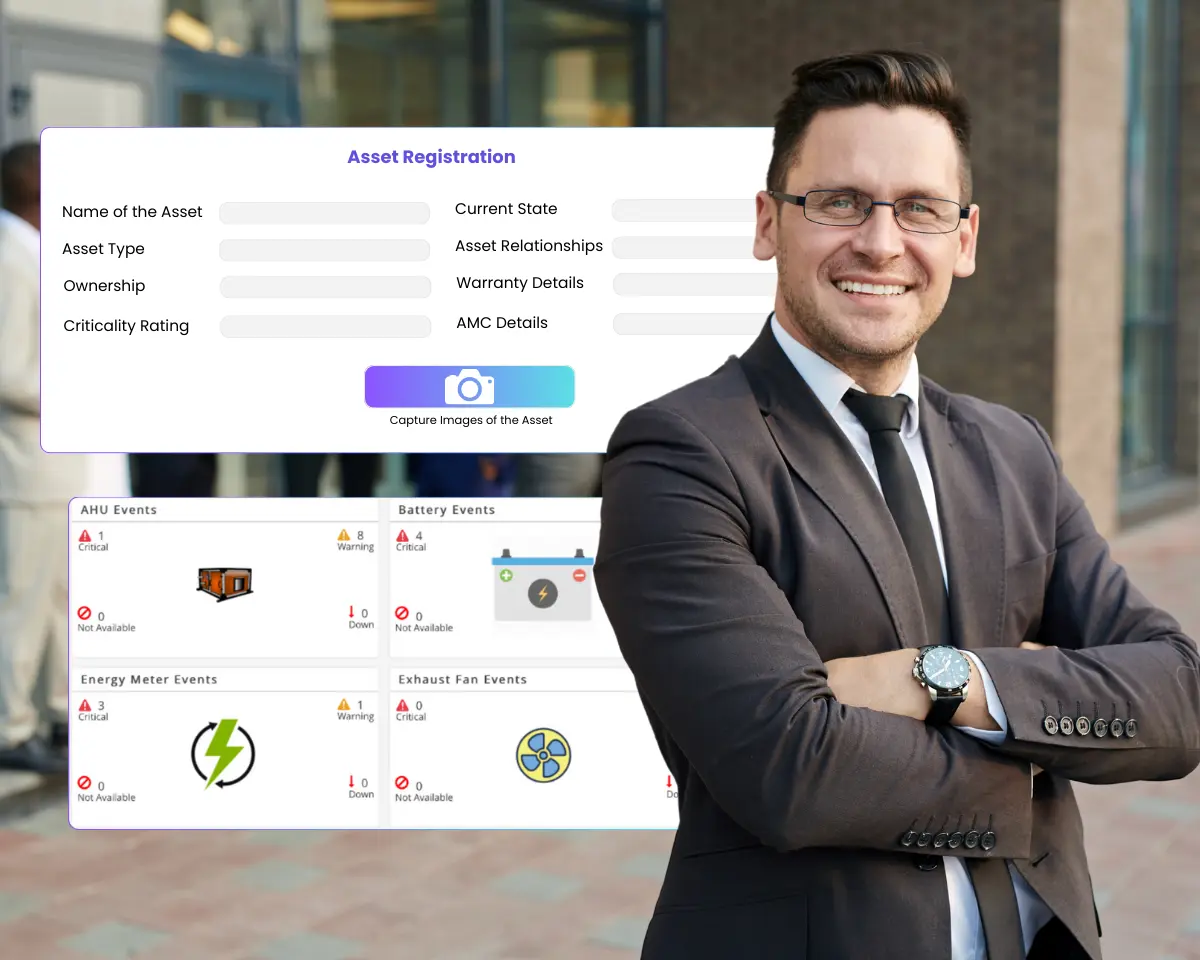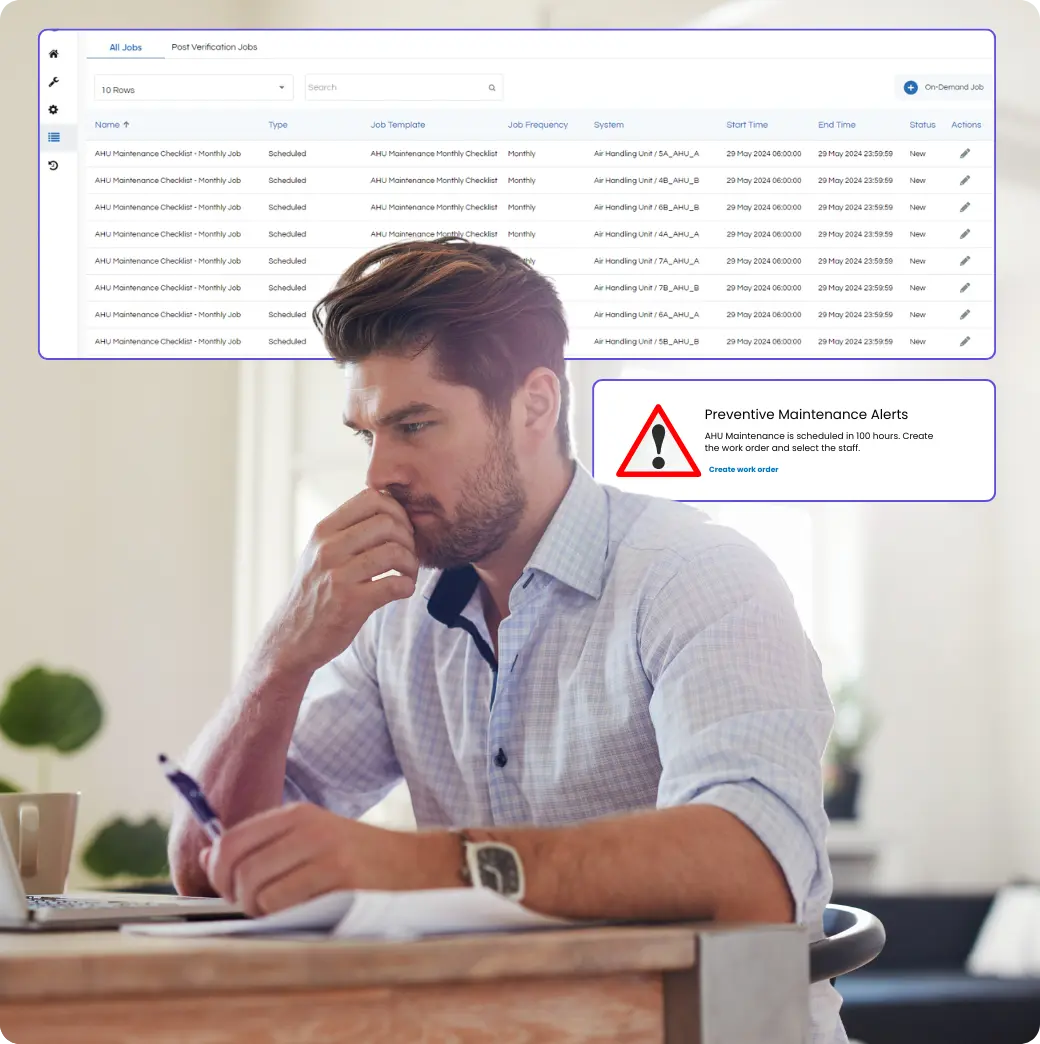Data-Driven Asset & Maintenance Management to Improve Asset Uptime by 40%
AI-powered CAFM/CMMS to Streamline operations, minimize downtime, and cut costs.

Work Order & Field Service Management
Digitize Work Orders & Field Service Management to improve operational & resource efficiency
Assets & Inventory Management
Create centralized database for assets & link assets with maintenance management to improve uptime
Data-Driven Maintenance Management
Digitally empower your field force and create Statement of record throughout asset life cycle. Enforce compliances in service operations
Digitized Critical Workflows
Use digitized workflows for contract workforce to easily implement & measure task completion, compliance norms and service levels etc.
Efficient Work Order & Field Service Management
- Create Work orders & tasks seamlessly
- Improve the efficiency of Field Service Management with digitized workflows
- Capture Field Data, Task Management & Service Management
- Mobile ready – No code eForms for Field Force


Assets & Inventory Management
- Asset registration with various necessary attributes such as type, location, ownership, criticality rating, current state, asset relationships, warranty, AMC etc.
- Actively manage assets through the asset lifecycle to ensure accountability.
- Maintenance LogBooks for each type of asset with checklists
- Incident and fault management with SLA, MTTR, and MTBF measures
- Asset Reports through GenAI Engine
Data-Driven Maintenance Management
- Digital enablement of Periodic and Preventive Maintenance
- Planned Preventive Maintenance with 52-week calendar for maintenance schedules
- Enforce time, attendance, job scheduling, job completion, service levels, process compliance and work quality
- Digital Statement of Record for tasks, improve maintenance management and resource utilization efficiency by 20%


Workflow Engine to Manage Contractual Employees
- Pre-built workflows to manage contractual employees easily & effectively
- Digital Checklist to enforce Jobs, compliance and quality
- Improve overall resource management and utilization
- Use no code eForms to capture carbon footprint (ESG Scope 3)
How a Large Corporate Real Estate Used db Optima to improve Asset Uptime
2 SITES | 1.4 MILLION SQ. FT.
Challenges
- Unstructured Field Service Management with a lack of documentation
- Manual & error prone Asset & Maintenance Management
- No measurement of task completion, compliance norms, service levels etc.
Solutions
- Asset registration with asset type, location, asset lifecycle, criticality rating, allocation, warranty, AMC, etc.
- Planned Preventive Maintenance with a 52-week calendar for maintenance schedules
Incident and fault management with SLA, MTTR, and MTBF measures
- eForms to manage workflows & ticketing
Outcomes
- Digital Enablement, Operations Optimization & Service Assurance
- Significant improvement in Asset Uptime
- Seamless ticketing system to schedule work orders, jobs and track completion

See it in action!

Play Video
Explore Possibilities with db Optima at the center

Automate Operations & Maintenance with our IBMS Solution
- Automate ticket management and staff scheduling
- Asset management & Preventive maintenance through digital twin

Make Energy Conservation easier with our Active Energy Management Solution
- Automate maintenance activities & staff scheduling for faults identified in HVAC or its sub-systems
- Assign relevant checklists and jobs to the field force based on faults & alerts
- Digitized ESG Scope 3 reports from vendors through structured e-Forms without writing a line of code

Manage People and Assets both with our Workplace Technology Suite
- Manage your Hybrid Workforce and assets together from one platform
- Analyse Attendance patterns and day wise data for planning amenities, staff scheduling & maintenance activities
- Improve employee wellness through pro-active janitorial alerts for restroom hygiene
- Act on employee feedback instantly with integrated ticket management and SLA tracking
Ready to explore? Get in touch with us to find out more
Solutions for Different Industry Segments
of building costs are associated with capital expenses, while 75% of costs are used to operate a building over its life cycle.
Only
0
%









